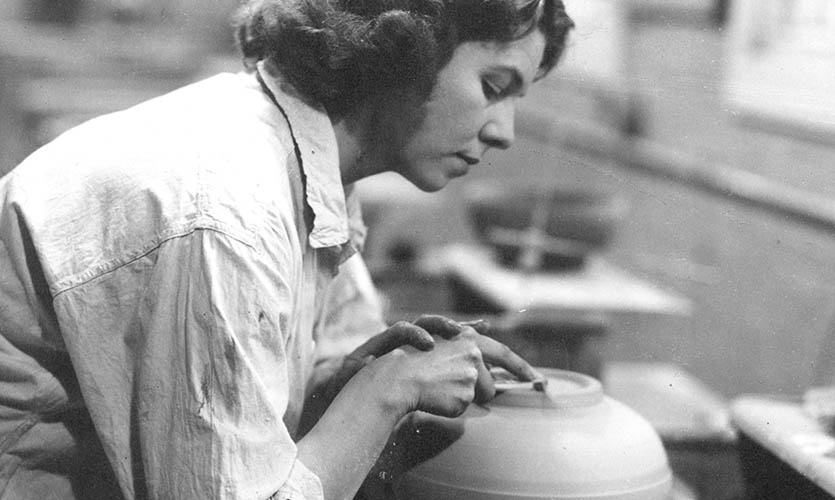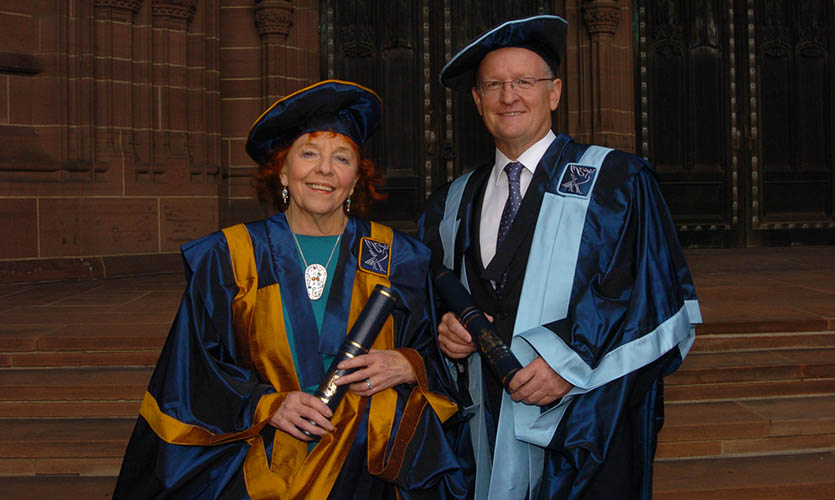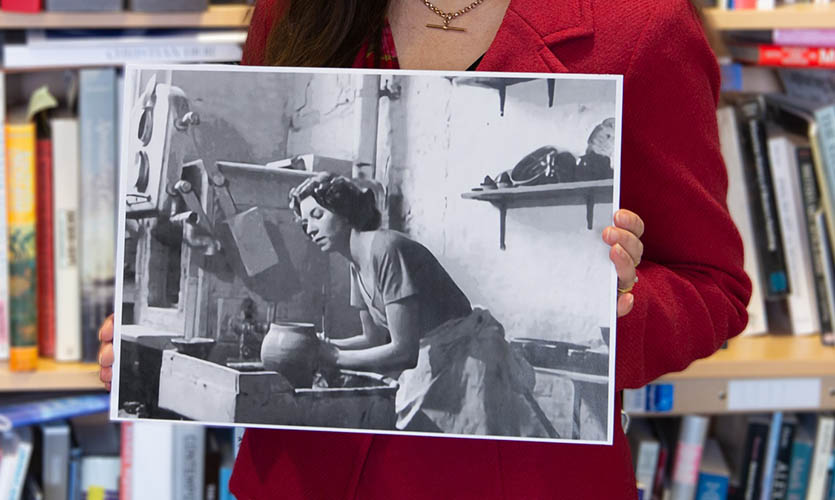Julia Carter Preston (1926-2012)
For decades Julia Carter Preston produced highly distinctive and sought-after ceramic art in the heart of Liverpool.
The youngest of four daughters, Julia was born into a family very much at the centre of the artistic world. Her mother was a talented watercolourist and dressmaker, and her father Edward Carter Preston, known as ECP, was a painter, sculptor and medallist whose major works include many of the British gallantry decorations for both world wars, and many sculptures decorating the interior of Liverpool's Anglican Cathedral.
On the advice of her father, she enrolled for the National Diploma of Art at the Liverpool College of Art, taking life drawing and learning about craft, including sculpture, metalwork and her abiding interest, ceramics. It was during this time that she learnt the ‘sgraffito’ technique, which characterises her highly sought after works.
Dr Emma Roberts, Associate Dean for Global Engagement for the Faculty of Arts, Professional and Social Studies and a Reader in History of Art and Design, explains: “Famously, Julia revived the ancient Islamic tradition of ‘sgraffito’, which involves scratching away one layer of an object in order to reveal different colours or textures beneath. An example of Julia’s important work was also presented to the (then) Prince Charles when he visited Liverpool in 2007.”
Following graduation, Julia worked at the historic Bluecoat Chambers, teaching life drawing. She also continued to teach ceramics at the College of Art, a career which began during her student days, and which culminated in her becoming Head of the Department of Ceramics. Ceramics became a notable area in the school’s history as various kilns were acquired over the years.
“Julia Carter Preston was a real inspiration. Having emerged from an artistic family, she was encouraged to nurture her prodigious talent and went on to study at Liverpool College of Art. Eventually, she returned to the college to teach, and became Head of Ceramics, at a time when most art colleges were dominated by men. Under her leadership the ceramics department was extremely prestigious and played a large part in the revival of ceramics and mosaics in the north-west during the mid-twentieth century. There are several churches in Merseyside which still depict her work.”
– Dr Emma Roberts

One notable student, John Lennon, referred to her as Maid Marion but as Julia explains his interests didn't include ceramics. “He knew exactly what he wanted to do, and it wasn't ceramics,” she recalls saying, “I couldn't make him listen.” But it turned out that John couldn't make Julia listen either as her visits to the Cavern Club to see the Beatles are said to have left her rather less than enthused.
Her works have been in many public and private collections, including the Smithsonian Institution in Washington, the National Museum of Ulster and the Walker Art Gallery Liverpool. She also exhibited at the Victoria and Albert Museum and was Wedgwood's official lecturer.
She was made a Fellow of LJMU in 2005 and embodies all that LJMU continues to thrive to achieve today, offering our students a transformational experience that leads them into fulfilling careers.
Dr Roberts added: “I am delighted in 2023 also to be working at Liverpool School of Art and Design, and to be able to look back at Julia Carter Preston’s achievements for insight and influence.”



